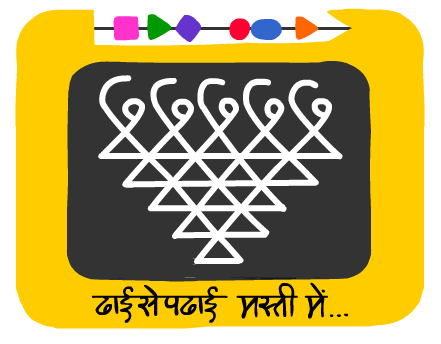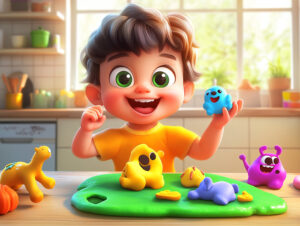Introduction
Early childhood is a crucial phase for brain development, where sensory experiences play a significant role in shaping cognitive and motor skills. Engaging in art-based activities helps children enhance neural connections, improve fine motor skills, and develop spatial awareness. According to research from Harvard’s Center on the Developing Child, hands-on activities stimulate synaptic growth, forming strong learning foundations.
In this blog, we explore 10 brain-boosting art activities for young learners, backed by science.
1. Finger Painting with Natural Dyes 🎨
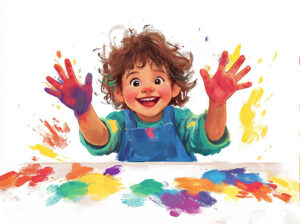 [
[
Why It Works:
Enhances tactile sensory processing and hand-eye coordination.
Encourages color recognition and emotional expression.
Studies show that early finger movement improves writing and motor skills (Hogan & Tandon, 2020).
How to Do It:
Use natural dyes from beetroot, turmeric, and spinach.
Let children dip fingers and create abstract patterns.
Discuss textures and colors to enhance vocabulary.
2. Leaf Printing 🍃
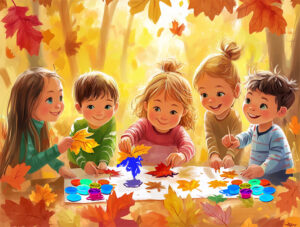
Why It Works:
Promotes pattern recognition and scientific curiosity.
Encourages outdoor exploration and environmental awareness.
Research from the Journal of Early Childhood Research highlights the impact of nature-based learning on cognitive growth.
How to Do It:
Collect leaves of different shapes.
Dip them in non-toxic paint and press onto paper.
Encourage kids to observe veins and textures.
3. Clay Modeling (Animals & Shapes) 🏺

Why It Works:
Develops fine motor skills by strengthening finger muscles.
Enhances spatial reasoning and creativity.
Studies indicate that sculpting boosts problem-solving and concentration (Wilson, 2017).
How to Do It:
Provide soft, non-toxic clay.
Guide children to mold basic animal shapes.
Ask them to describe their creations to improve storytelling skills.
4. Sand Art & Drawing in Wet Sand ⏳
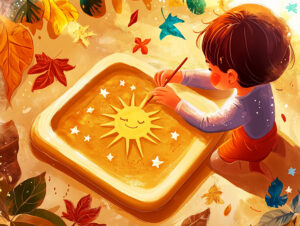
Why It Works:
Improves tactile sensory integration.
Enhances early pre-writing skills through texture-based exploration.
Research from the American Journal of Occupational Therapy highlights the benefits of textured writing for early literacy.
How to Do It:
Provide a tray of fine sand.
Let kids draw letters, shapes, and patterns using their fingers.
Use a spray bottle to create damp sand for better impressions.
5. Hand and Footprint Art (Butterflies, Trees, etc.) 👣
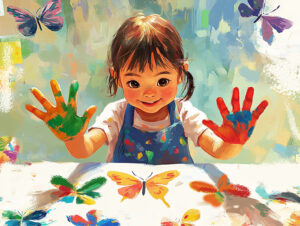
Why It Works:
Strengthens body awareness and motor planning.
Helps in understanding cause and effect (pressing hand = print).
Studies by Montessori experts indicate that multi-sensory learning enhances retention.
How to Do It:
Dip hands and feet in child-safe paint.
Create butterflies, trees, and animals using prints.
Let children decorate with markers after drying.
6. Tearing & Pasting Paper Collage ✂️
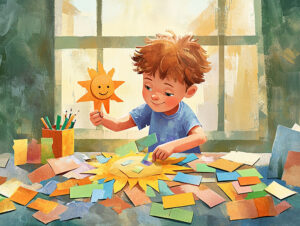
Why It Works:
Builds fine motor strength and hand dexterity.
Encourages creative problem-solving by forming images with torn pieces.
Research on cognitive development (Piaget, 1952) supports hands-on exploration for concept formation.
How to Do It:
Provide colored paper and let children tear pieces.
Arrange them into fun images (sun, animals, trees, etc.).
Discuss shapes and sizes to enhance early math skills.
7. Bubble Painting with Natural Colors 🫧

Why It Works:
Engages multiple senses (sight, touch, and breathing control).
Introduces basic science concepts like air pressure and surface tension.
A study by Gopnik et al. (2009) found that children learn cause-effect relationships through play.
How to Do It:
Mix natural colors with water and mild soap.
Use a straw to blow bubbles onto paper.
Observe how colors blend into unique patterns.
8. Rock Painting & Storytelling Stones 🪨
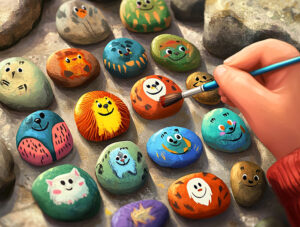
Why It Works:
Encourages symbolic thinking and early storytelling.
Develops visual memory (important for reading and writing skills).
Neuroscientists (Diamond, 2009) found that art enhances long-term memory formation.
How to Do It:
Collect smooth stones and provide paint markers.
Paint simple animals, emotions, or nature symbols.
Let kids create a story using the painted stones.
9. Shadow Drawing (Using Objects from Nature) 🌞
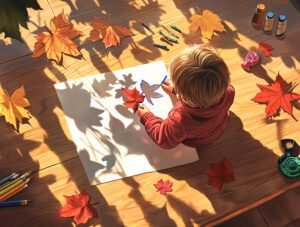
Why It Works:
Boosts spatial reasoning and light perception.
Helps children understand how light interacts with objects.
Studies show that hands-on physics activities improve early science learning (National Research Council, 2012).
How to Do It:
Place objects like leaves, toys, or hands in sunlight.
Trace their shadows on paper using crayons.
Discuss shadow movement during the day.
10. Edible Playdough Art (Fruits, Animals, etc.) 🍎
Why It Works:
Enhances sensory learning through touch, smell, and taste.
Develops early categorization skills (food vs. non-food items).
Research from the Journal of Sensory Studies confirms that multi-sensory exposure enhances learning speed.
How to Do It:
Make edible playdough using flour, salt, and food coloring.
Let kids mold fruits, animals, and favorite foods.
Encourage them to describe textures and colors.
Final Thoughts
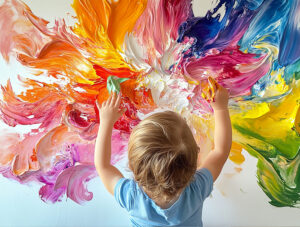
Introducing art-based activities in early childhood strengthens cognitive development, problem-solving skills, and motor control. Research consistently supports hands-on learning as a foundation for later academic success. Encourage kids to explore, create, and have fun while building essential brain connections!
